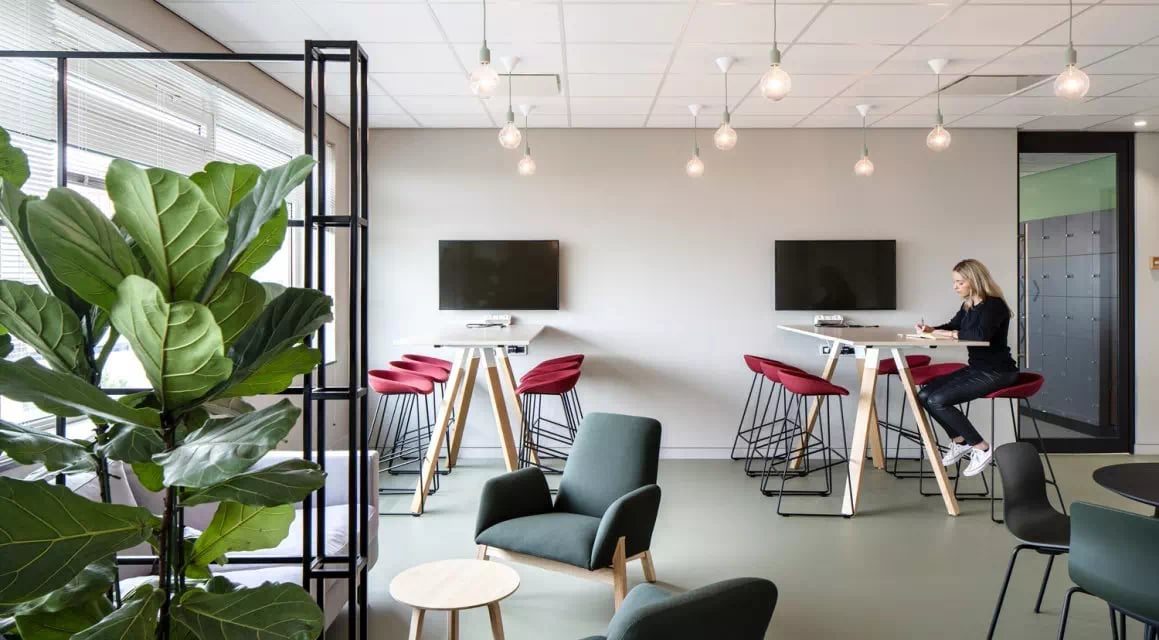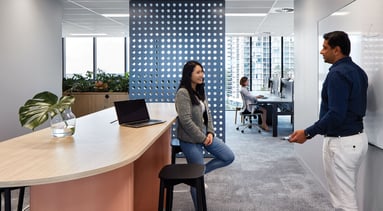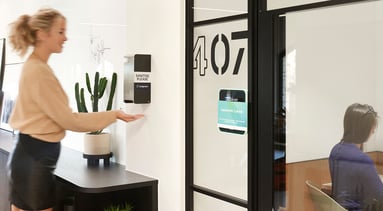Design trends to support mental health and wellness in the workplace

As organizations consider their return to office plans, employees’ mental health experiences need to be prioritized.
Supporting mental wellbeing for the modern workforce
Our study, The Reluctant Returner, a survey of 3,000 office workers, noted that over 75% of our respondents revealed that they missed the social elements of the workplace and, for many, remote working conditions are less than ideal on a permanent basis. Yet, a staggering 95% of employees would like to see improvements to their physical office space, suggesting that many are unhappy with their current workplace. So, what's the remedy? Unispace Chief Operating Officer, Claire Shepherd gives some insights.
“The link between office design and mental wellbeing is often overlooked, but the fact that almost half of the workforce felt that their mental health improved while working from home, highlights that too many workplaces do not meet the needs of the people that use them. We know that the office - a place that many of us are returning to on a more regular basis - can support mental wellbeing, from the positive collaboration and socialization opportunities our colleagues afford us, to easy access to amenities, and much more.
Small changes can have a huge impact as well, from color schemes, to lighting and representations of nature to acoustics, and room temperatures. But it all starts with truly understanding your colleagues and their needs. Having gone through a difficult period that has tested the resilience of us all, businesses need to consider what more they can do to proactively support the mental wellbeing of their workforce." – Claire Shepherd, Chief Operating Officer, Unispace
Understanding the mental health challenges at work
In a Work Design Magazine article, we share how organizations can leverage strategic design practices to embed mental health and wellness in the workspace.
Company cultures and employee perceptions around mental health have changed. Although employers have started to invest more in mental health initiatives, employees have increased their expectations. Employers need to create sustainable and mentally healthy workplaces or risk negatively impacting their people and business.
A 2021 report by Mind Share Partners shares telling information about the state of mental health in U.S. workplaces.
- Work factors - 84% suffered from negative mental health brought on by a work-related issue
- Attrition - 68% of millennials and 81% of Gen Z have left roles for mental health reasons
- Company culture - 91% of respondents believe a company's culture should support mental health
- DEIB - 54% believe demographics play a strong role in workplace mental health
Using the office to promote mental health and wellness
So, what can organizations do now to create workplace environments that nurture mental health and wellness?
- Create experiential and flexible spaces
Employees who are set up to do their best work are happier at work. Creating experiential and flexible spaces that support their different work styles can increase productivity and motivation to come back into the office. - Tie in natural and other environmental elements
Incorporate environmental elements that enable physical comfort and mental wellness. These may include design styles and elements like:
- Planters or green walls that improve air quality
- Acoustically treated areas that minimize noise
- Floor-to-ceiling windows that bring in natural light
- Soothing colors, textures, and scents
- Support physical health
Design that supports physical health also supports mental health. Incorporating areas for wellness and meditation, using adjustable furniture, and considering the flow of the office can encourage movement throughout the day.
Designing cafes and pantries to support healthy habits and including amenities like snacks, drinks, and meals can make employees feel valued and prioritized. - Prioritize DEIB and culture
If your workspace doesn’t work for everyone, it can affect the mental health of your teams. Give your employees a place where they feel welcomed and respected and that is accessible and usable by everyone. From a design strategy, this means creating an equal emphasis on different working styles and considering potential sensitivities.
Culture and policy go hand in hand with inclusive design. To truly embed DEIB practices in the work environment, an organization must have a culture of diversity and inclusion. This may include offering different technological solutions, flexible working policies, or initiatives that combat the “always-on culture.”
In an era of prioritizing the people and experience, 2019 workspace design isn’t going to cut it. Organizations have an opportunity to rethink the role of the physical office in employee mental health and create an environment that inspires and supports talent.
Check out more of our insights on mental health and design in designwell and on DesignWell365 Podcast.
Learn more about how today's office can support mental wellbeing.


